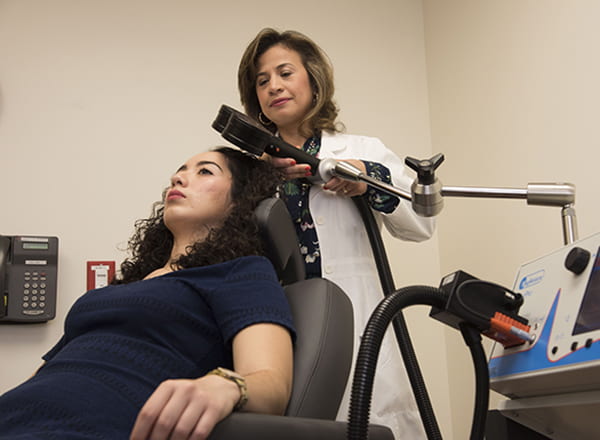
Transcranial magnetic stimulation is an office-based non-invasive procedure to treat depression in patients who have not benefitted from other antidepressant treatments.
During a TMS treatment, an insulated magnetic coil is placed over the scalp, to reach the left dorso-lateral prefrontal cortex, a brain region involved in depression. This area rests underneath the forehead close to the hairline.
The TMS device discharges an electrical current into the coil, which creates a strong magnetic field (similar to the strength of an MRI device 1.5 – 3 Tesla). This magnetic field (and not the current directly) passes through the head inducing a flow of current in brain cells in the proximity of the TMS coil. It is thought that the effects of TMS are not only limited to the prefrontal cortex but they also impact distant but interconnected brain regions. Therefore TMS induces modulation of brain networks that are involved in depression.